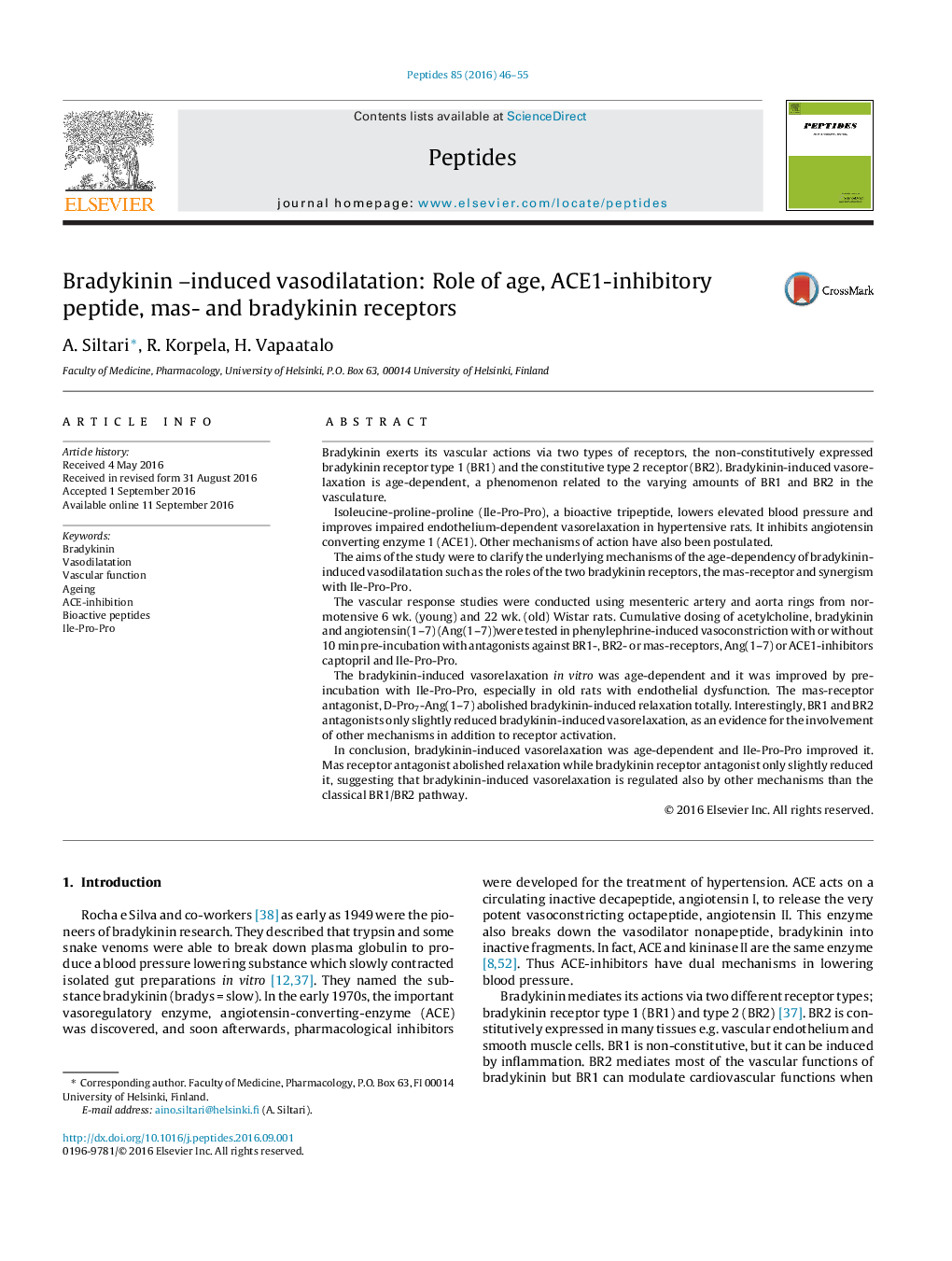| Article ID | Journal | Published Year | Pages | File Type |
|---|---|---|---|---|
| 5514771 | Peptides | 2016 | 10 Pages |
â¢Bradykinin-induced vasorelaxation is age-dependent and that Ile-Pro-Pro, an ACE1-inhibitor, is able to improve bradykinin's properties in the vessels of aged rats.â¢The mechanism by which the tripeptide augments bradykinin vasodilatation may be similar to that encountered with Ang(1-7).â¢Mas-receptor antagonist, D-Pro7-Ang(1-7) abolished bradykinin and Ang(1-7) induced relaxation totally.â¢D-Pro7-Ang(1-7) is also an antagonist for MrgD receptors which may partly regulate vasodilatation caused by bradykinin and Ang(1-7).
Bradykinin exerts its vascular actions via two types of receptors, the non-constitutively expressed bradykinin receptor type 1 (BR1) and the constitutive type 2 receptor (BR2). Bradykinin-induced vasorelaxation is age-dependent, a phenomenon related to the varying amounts of BR1 and BR2 in the vasculature.Isoleucine-proline-proline (Ile-Pro-Pro), a bioactive tripeptide, lowers elevated blood pressure and improves impaired endothelium-dependent vasorelaxation in hypertensive rats. It inhibits angiotensin converting enzyme 1 (ACE1). Other mechanisms of action have also been postulated.The aims of the study were to clarify the underlying mechanisms of the age-dependency of bradykinin-induced vasodilatation such as the roles of the two bradykinin receptors, the mas-receptor and synergism with Ile-Pro-Pro.The vascular response studies were conducted using mesenteric artery and aorta rings from normotensive 6 wk. (young) and 22 wk. (old) Wistar rats. Cumulative dosing of acetylcholine, bradykinin and angiotensin(1-7) (Ang(1-7))were tested in phenylephrine-induced vasoconstriction with or without 10Â min pre-incubation with antagonists against BR1-, BR2- or mas-receptors, Ang(1-7) or ACE1-inhibitors captopril and Ile-Pro-Pro.The bradykinin-induced vasorelaxation in vitro was age-dependent and it was improved by pre-incubation with Ile-Pro-Pro, especially in old rats with endothelial dysfunction. The mas-receptor antagonist, D-Pro7-Ang(1-7) abolished bradykinin-induced relaxation totally. Interestingly, BR1 and BR2 antagonists only slightly reduced bradykinin-induced vasorelaxation, as an evidence for the involvement of other mechanisms in addition to receptor activation.In conclusion, bradykinin-induced vasorelaxation was age-dependent and Ile-Pro-Pro improved it. Mas receptor antagonist abolished relaxation while bradykinin receptor antagonist only slightly reduced it, suggesting that bradykinin-induced vasorelaxation is regulated also by other mechanisms than the classical BR1/BR2 pathway.
